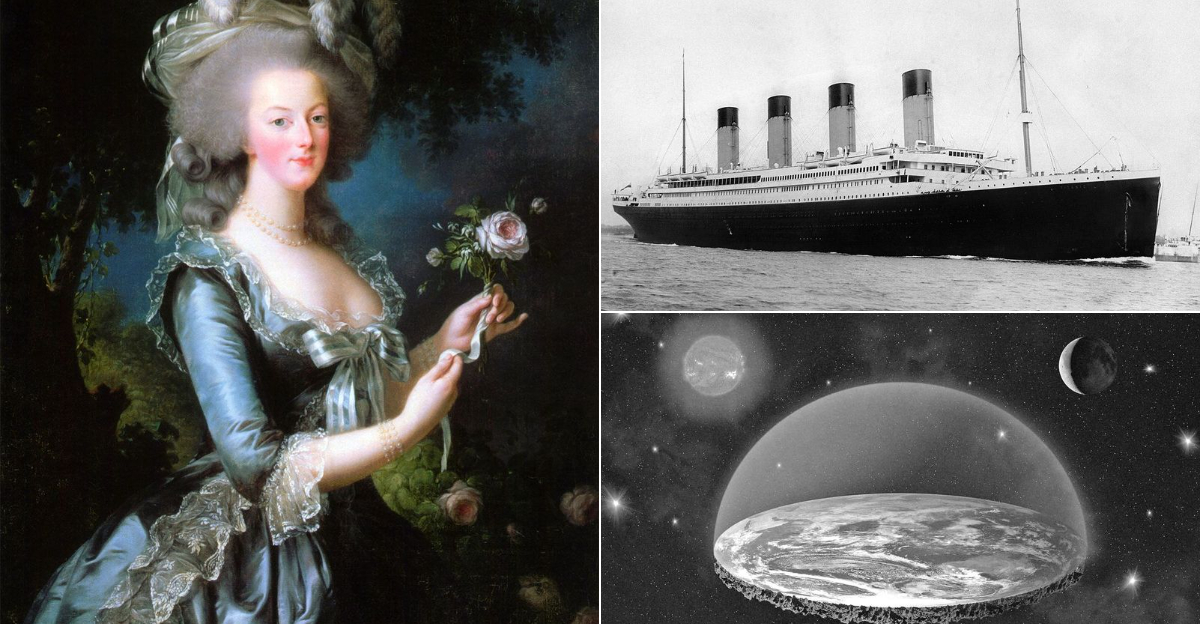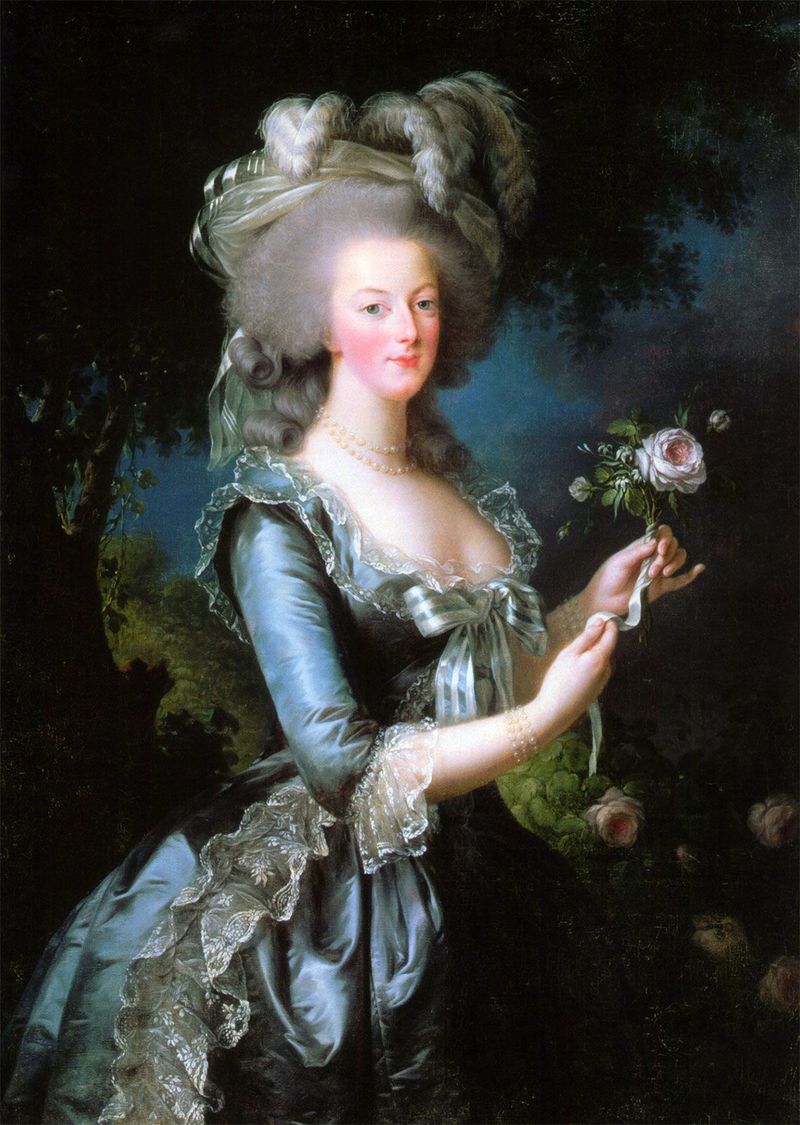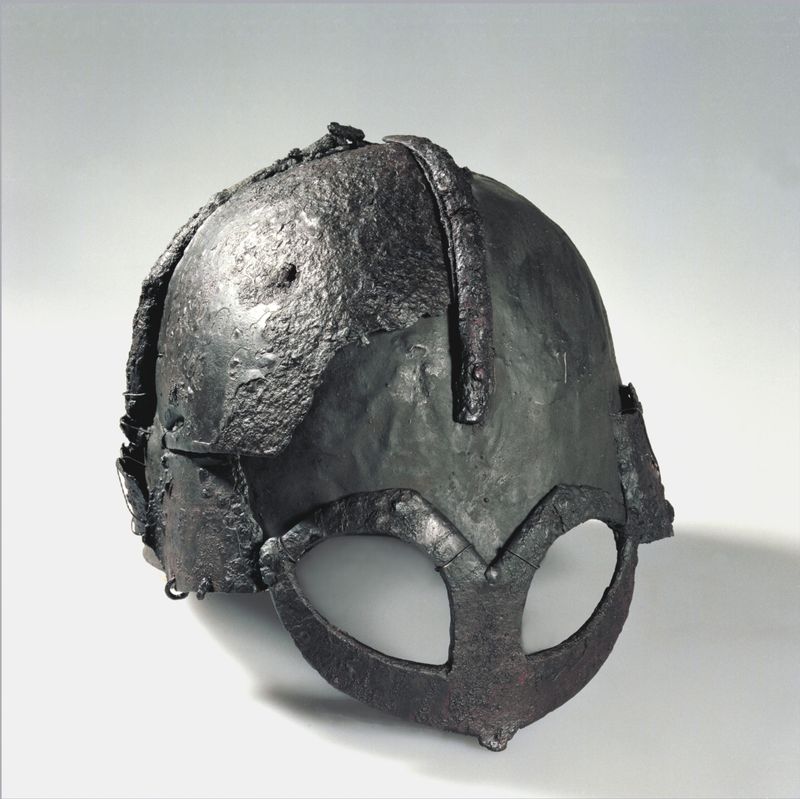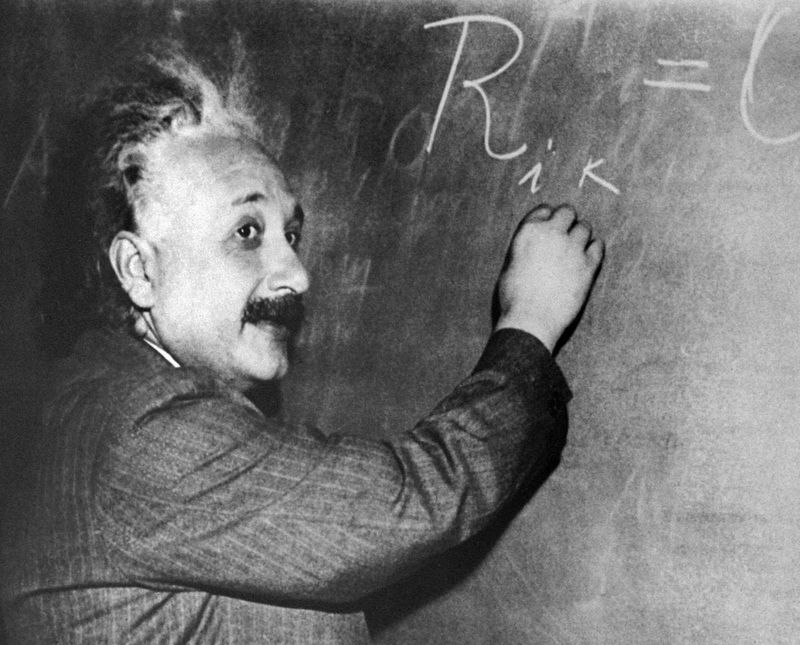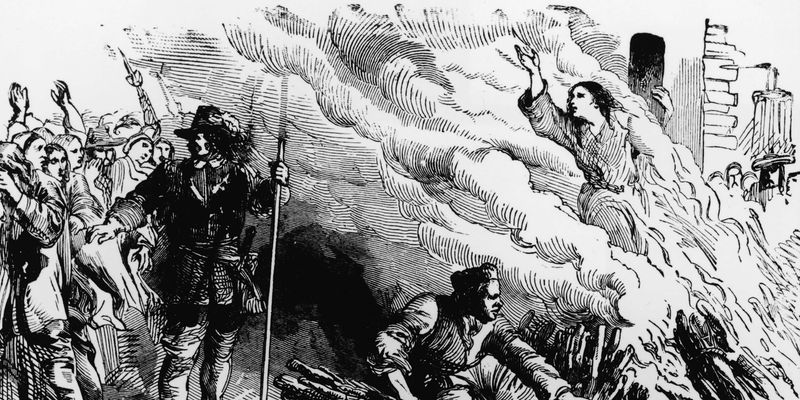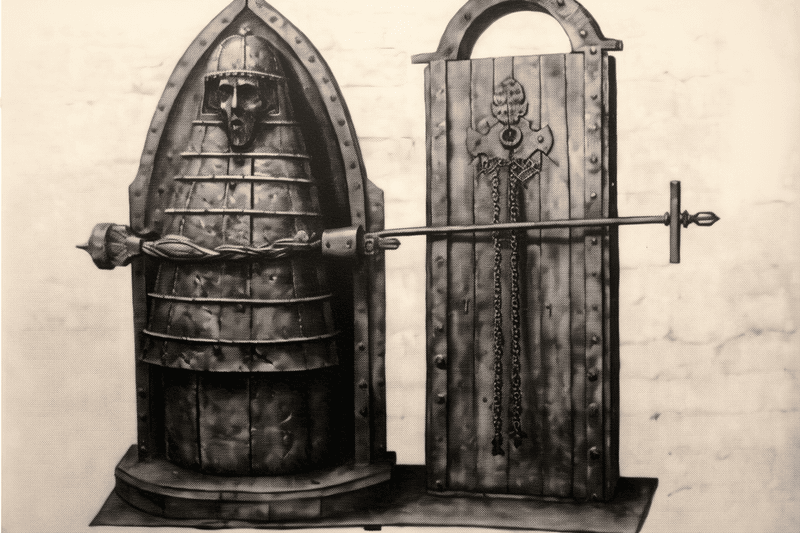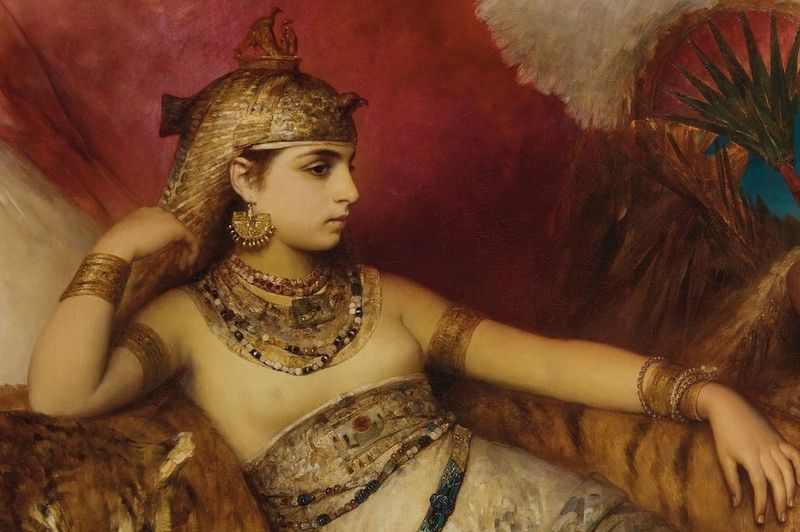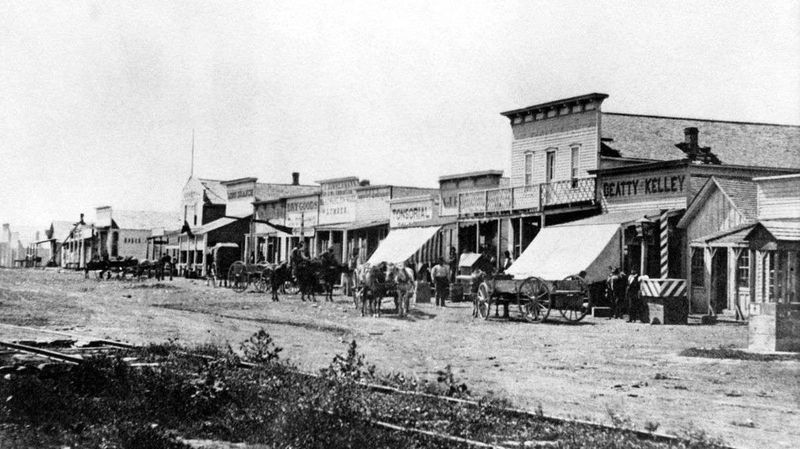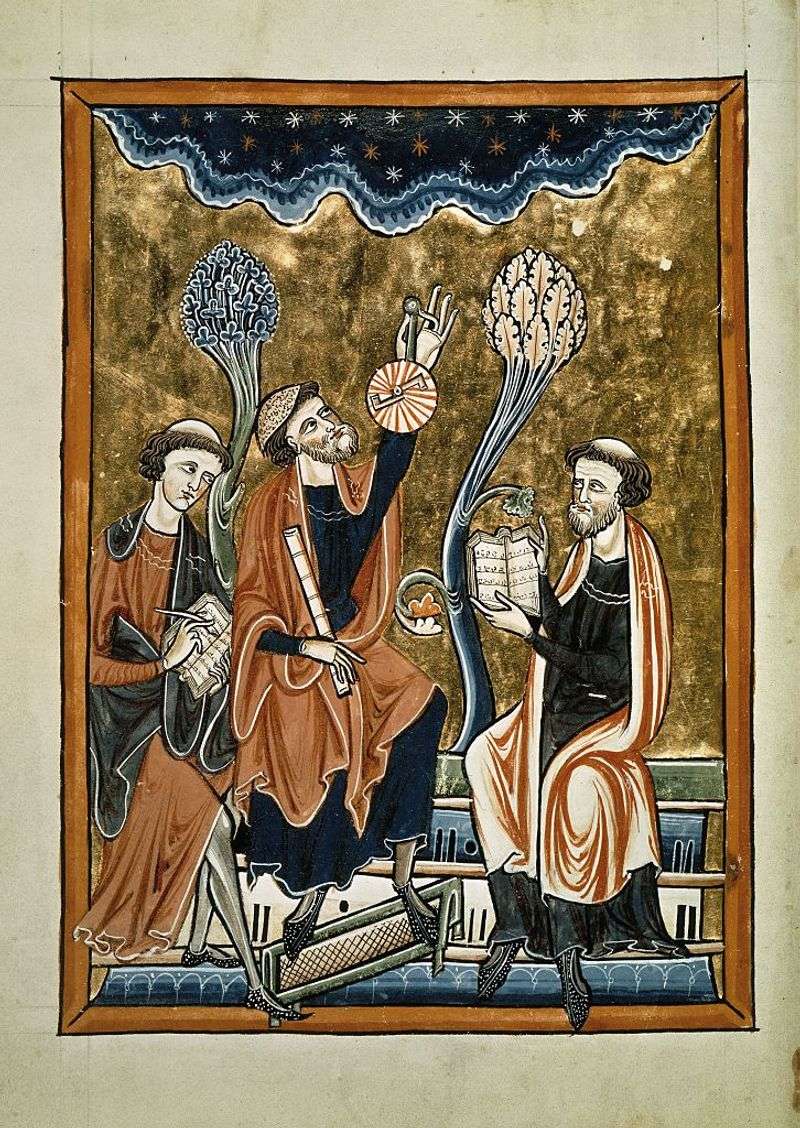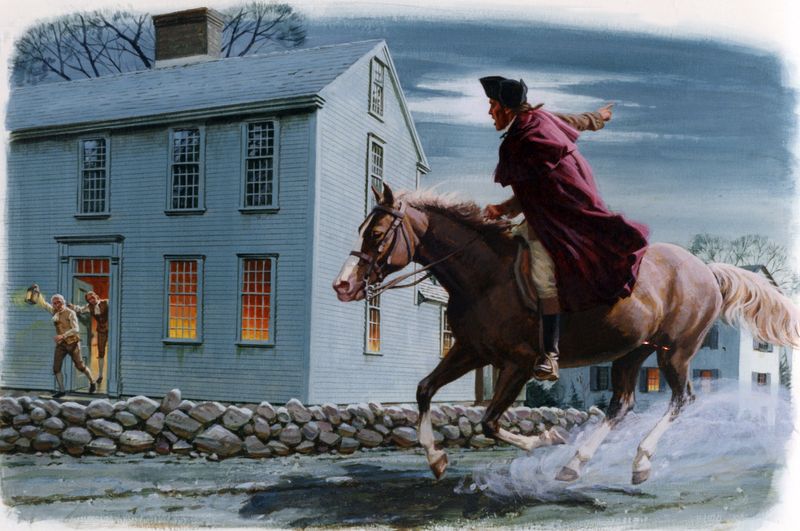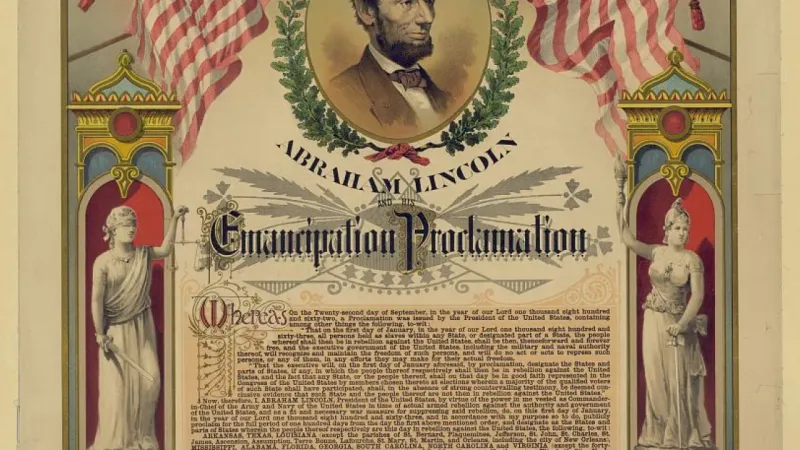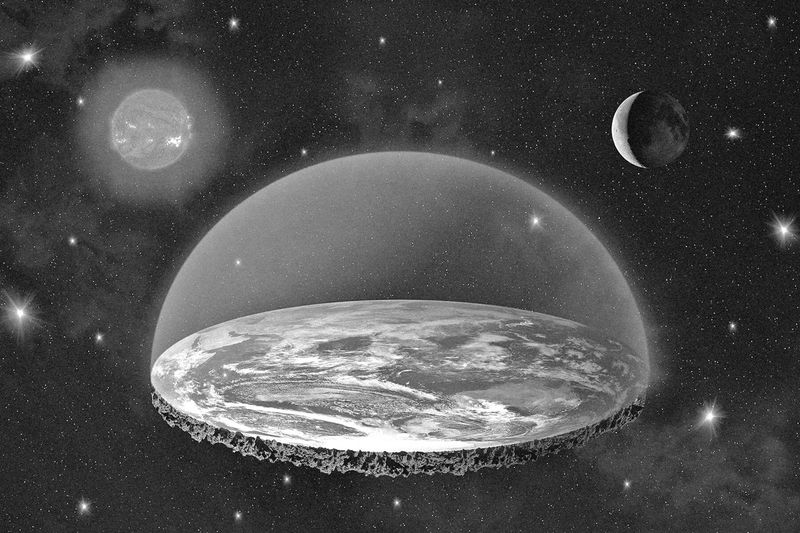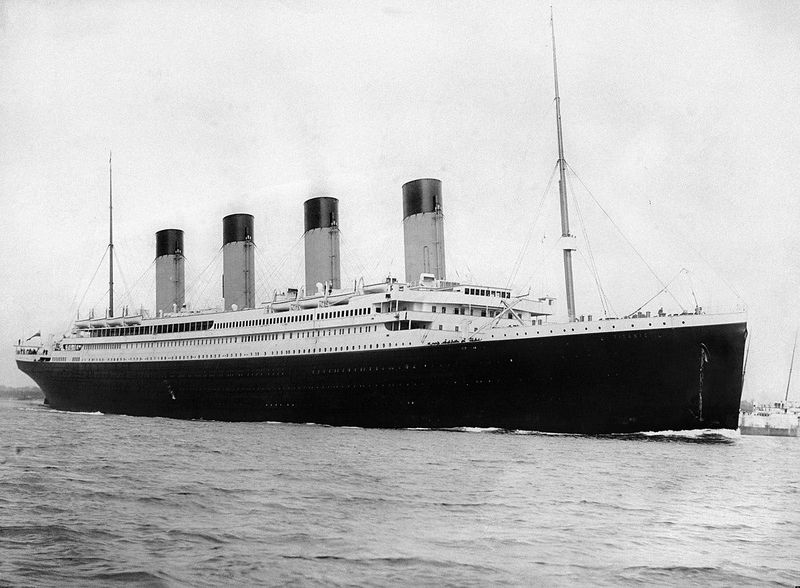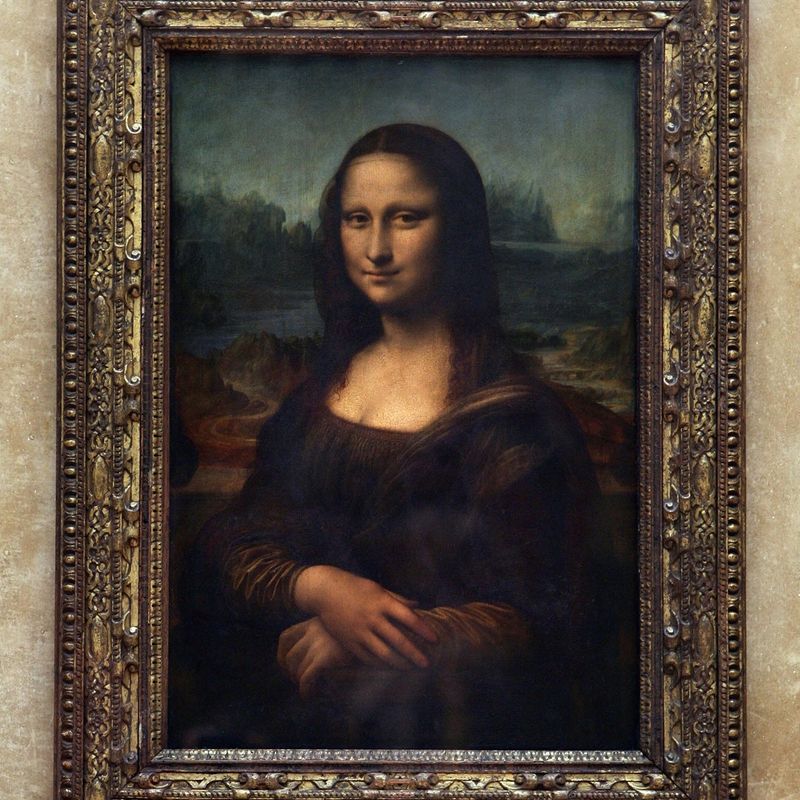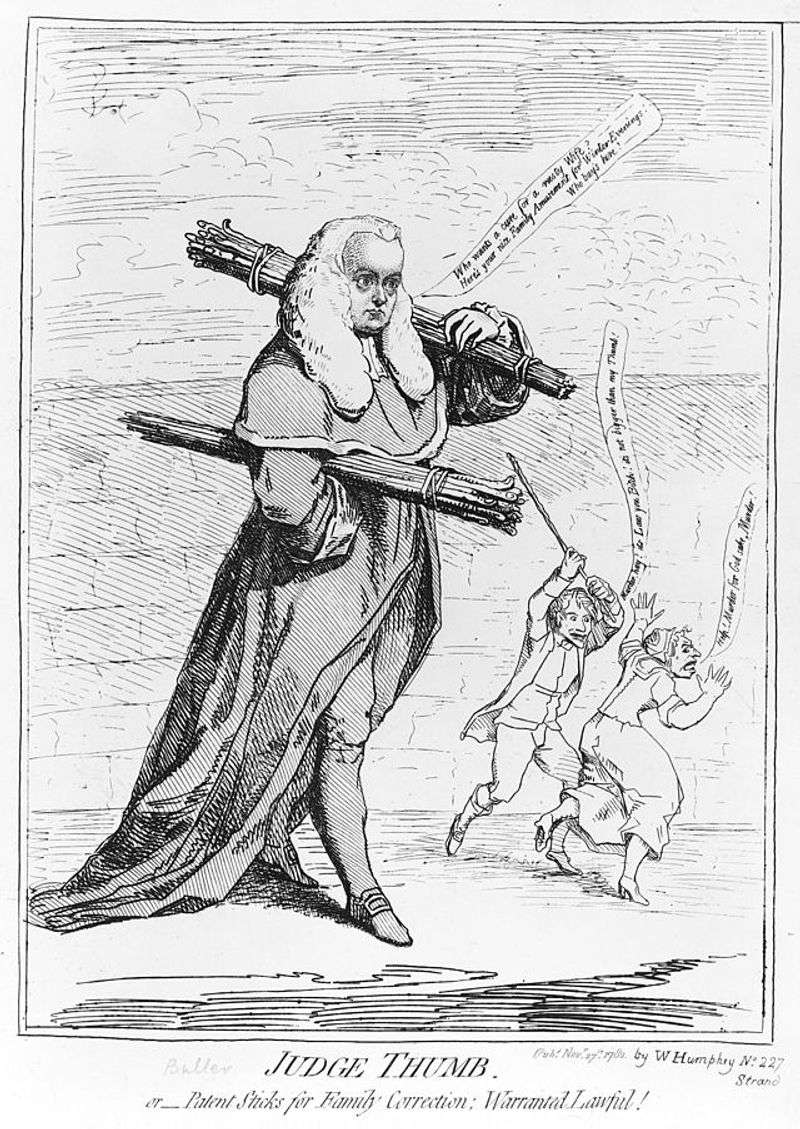History is filled with myths and misconceptions that have been perpetuated over time. In this blog, we aim to uncover the truth behind 23 well-known historical myths. From misunderstood phrases to misrepresented figures, these entries will shed light on the facts and debunk the falsehoods that have been told for generations. Join us as we explore these intriguing myths and discover the surprising truths behind them.
1. Marie Antoinette Said ‘Let Them Eat Cake’
Marie Antoinette’s infamous line, ‘Let them eat cake,’ is a phrase many associate with her indifference to the plight of the poor. However, this callous remark likely never crossed her lips. It first appeared in Jean-Jacques Rousseau’s writings, attributed to an unnamed ‘great princess.’ Intriguingly, this occurred years before Marie Antoinette even became queen of France. This myth paints her unjustly as out of touch with her subjects. The truth is more nuanced—she was caught in a tumultuous period of economic and political upheaval. Her life ended tragically at the guillotine during the French Revolution.
2. Vikings Wore Horned Helmets
The image of Vikings sporting horned helmets is deeply ingrained in popular culture, thanks to 19th-century opera costumes and modern media. Yet, not a single horned helmet has been unearthed from the Viking era. Archaeologists have found helmets, but none with horns. This enduring myth likely arose from artistic interpretations rather than historical evidence. Vikings were indeed fearsome warriors, but their practicality meant eschewing such cumbersome headgear in battle. Their legacy includes exploration, trade, and impactful cultural exchanges across Europe, rather than fanciful fashion statements.
3. Napoleon Was Extremely Short
Napoleon Bonaparte, one of history’s most brilliant military leaders, is often ridiculed for his supposed diminutive stature. In reality, he stood at 5 feet 6 inches tall, quite average for his time. British propaganda exaggerated his shortness to undermine his leadership and character. This portrayal served as a convenient tool for ridicule, painting him as a tiny tyrant. Despite these misconceptions, Napoleon’s influence on legal codes, military tactics, and the political landscape of Europe was immense. He remains a towering figure in history, irrespective of his physical height.
4. The Great Wall of China Is Visible from Space
Many believe that the Great Wall of China, a marvel of engineering, is visible from space. In reality, even from low Earth orbit, it’s challenging to spot with the naked eye. More prominent features like cities and highways are more discernible. This myth likely originated as a testament to the wall’s grandeur rather than its visibility. Its construction spanned centuries, designed to protect against invasions and raids. While not a celestial landmark, its significance in Chinese history and culture is indisputable. The wall symbolizes human perseverance and ingenuity.
5. Einstein Failed Math in School
Albert Einstein, the genius behind the theory of relativity, is often mistakenly believed to have failed math in school. This myth likely emerged from misunderstandings about his early education. In truth, Einstein excelled in mathematics, demonstrating remarkable ability from a young age. His grades were consistently high, showcasing his natural aptitude. This falsehood diminishes his genuine achievements and perseverance. His contributions to physics have reshaped our understanding of the universe. Einstein’s life is a testament to curiosity and intellectual brilliance, inspiring generations of scientists and thinkers worldwide.
6. Columbus Proved the Earth Was Round
Christopher Columbus is widely, but incorrectly, credited with proving the Earth is round. By his time, educated Europeans already understood this fact, thanks to ancient Greek scholars. Columbus’s real error lay in underestimating the planet’s size, which led him to believe he could reach Asia by sailing west. Despite his miscalculations, his voyages opened the Americas to European exploration and colonization. Columbus remains a contentious figure, celebrated and criticized for his role in history. His journeys sparked global exchanges that have shaped the modern world.
7. Witches Were Burned at the Stake in Salem
The Salem witch trials evoke images of witches being burned at the stake, yet this is not historically accurate. In Salem, those convicted of witchcraft were mostly hanged. Burning was more prevalent in Europe, particularly during earlier witch hunts. This distinction highlights the varied and brutal methods of persecution faced by those accused of witchcraft. The trials were fueled by fear, superstition, and social tensions. They remain a dark chapter in American history, serving as a warning against hysteria and injustice. The legacy of Salem endures as a cultural reference and historical lesson.
8. The Iron Maiden Was a Medieval Torture Device
The Iron Maiden, a notorious torture device, is often linked to the medieval period. However, no evidence supports its use during that time. It’s likely a 19th-century fabrication created to sensationalize tales of medieval brutality. This myth feeds into exaggerated perceptions of medieval torture. Genuine medieval punishment was harsh, but the Iron Maiden’s existence is more fiction than fact. Its story underscores our fascination with historical horror and myth-making. The name itself evokes a chilling image, contributing to its enduring legacy in popular imagination.
9. Cleopatra Was Egyptian
Cleopatra VII, often portrayed as the epitome of Egyptian royalty, was actually of Greek descent. She belonged to the Ptolemaic dynasty, descendants of Ptolemy I, a general under Alexander the Great. Cleopatra’s story is one of political acumen and strategic alliances. She ruled Egypt, embracing both Greek and Egyptian cultures to solidify her power. Her relationships with Julius Caesar and Mark Antony have captivated historians and storytellers alike. Her legacy as a powerful female ruler endures, transcending the myth of her origins and highlighting her complex identity.
10. The Wild West Was Lawless and Violent
The Wild West is often romanticized as a lawless and violent era, but this image is more fiction than reality. Many frontier towns had lower crime rates than modern cities, with a robust legal system to maintain order. Gunfights were rare and largely exaggerated by dime novels and Hollywood. The West was home to diverse communities striving for stability and prosperity. This myth obscures the real challenges and triumphs of settlers and indigenous peoples alike. While it was a period of expansion and conflict, it was also one of resilience and adaptation.
11. The Dark Ages Were a Time of Total Ignorance
The term ‘Dark Ages’ evokes images of ignorance and cultural stagnation, but this label is misleading. During this period, significant scientific and cultural advancements occurred, particularly in the Islamic world and Byzantine Empire. The myth arose from Renaissance writers who viewed themselves as reviving classical knowledge. However, medieval Europe witnessed the flourishing of art, architecture, and intellectual pursuits. The era laid the groundwork for future innovations and exchanges. Its complexity defies simple characterization as ‘dark,’ reminding us of the multifaceted nature of historical narratives.
12. Paul Revere Shouted ‘The British Are Coming!’
Paul Revere’s midnight ride is legendary, but the phrase ‘The British are coming!’ is a latter-day embellishment. Revere’s mission was covert, avoiding loud proclamations that might alert British patrols. His warning system relied on discreet signals and trusted networks. This myth simplifies a complex event pivotal to the American Revolution. Revere’s ride underscores the ingenuity and coordination among colonists in their quest for independence. It serves as a testament to the power of mythmaking in shaping collective memory, even when facts diverge from the narrative.
13. The Emancipation Proclamation Freed All Slaves
Abraham Lincoln’s Emancipation Proclamation is celebrated as a defining moment in the fight against slavery, yet it didn’t free all enslaved people. Its scope was limited to Confederate states, leaving slavery intact in Union border states. This strategic decision aimed to weaken the Confederacy and bolster the Union cause. Full abolition came with the 13th Amendment, ratified later. The proclamation marked a crucial shift in the Civil War’s moral and political landscape. It remains a symbol of emancipation, highlighting the complex path toward freedom and equality in America.
14. Medieval People Thought the Earth Was Flat
The idea that medieval people believed in a flat Earth is a persistent myth, yet scholars since ancient Greece understood its roundness. This misconception gained traction through 19th-century writers critical of the Church. In reality, educated medieval Europeans were aware of the Earth’s shape, as evidenced by their astronomical and navigational knowledge. This myth paints a skewed picture of the Middle Ages, obscuring the era’s intellectual achievements. It serves as a reminder of how historical narratives can be distorted over time, often serving present-day agendas.
15. The Titanic Was Advertised as ‘Unsinkable’
The RMS Titanic is famously remembered as the ‘unsinkable’ ship, yet this claim wasn’t part of its official advertising. A magazine article made the assertion, and the label stuck, becoming a poignant irony after the tragic sinking. The myth amplifies the hubris associated with the Titanic’s fate, overshadowing the human stories aboard. Its sinking spurred changes in maritime safety regulations and remains a powerful cautionary tale. The Titanic’s story is one of technological ambition and human tragedy, symbolized by the enduring myth of its unsinkability.
16. The 5-Second Rule for Dropped Food
The ‘5-second rule’ suggests food dropped on the floor is safe if picked up quickly, but science disagrees. Bacteria can transfer to food instantly, regardless of time spent on the ground. This myth persists due to its reassuring simplicity, offering a false sense of cleanliness. Studies reveal that surface type and moisture play a more significant role in contamination. While the rule is a fun excuse to salvage a snack, it undermines food safety principles. Understanding microbial behavior helps dispel such myths, promoting informed choices in everyday life.
17. George Washington Had Wooden Teeth
George Washington’s reputed wooden teeth are a myth that glosses over the reality of his dental struggles. His dentures were made from a mix of materials, including ivory, gold, and human teeth. Wood was never used. This misconception highlights the challenges of 18th-century dentistry and Washington’s personal discomfort. Despite these issues, he led with strength, becoming a foundational figure in American history. The myth of wooden teeth adds a quirky element to his legacy, contrasting with his monumental achievements as a leader and statesman.
18. The Library of Alexandria Was Burned in One Catastrophic Fire
The destruction of the Library of Alexandria is often attributed to a single catastrophic fire, but history tells a more complex story. The library’s decline occurred over centuries, attributed to multiple events, including wars and decrees by conquerors. This myth simplifies the loss of a vast repository of knowledge, overlooking the myriad factors involved. The library symbolizes the fragility of cultural heritage and the enduring pursuit of wisdom. Its legacy endures as a symbol of intellectual curiosity and loss, reflecting the complexities of historical narratives.
19. Pirates Made People Walk the Plank
The image of pirates making captives walk the plank is a dramatic trope popularized by fiction, but historical evidence for this practice is scant. Pirates typically disposed of captives by throwing them overboard directly. The plank-walking myth adds theatrical flair to pirate lore, overshadowing the harsh realities of piracy. Pirates were ruthless and opportunistic, driven by profit rather than theatrical punishments. This myth reflects our fascination with pirate mythology, blending fact and fiction to create captivating narratives. Pirates remain iconic figures in seafaring history.
20. The CIA Invented ‘Conspiracy Theory’ to Discredit Critics
The term ‘conspiracy theory’ is often thought to have been invented by the CIA, but its origins trace back to the 1800s. The agency did popularize its dismissive use to counter skepticism after the JFK assassination. This myth highlights the power of language in shaping public perception. Conspiracy theories have existed throughout history, reflecting societal fears and uncertainties. The CIA’s involvement in framing the term underscores the complex interplay between government actions and public mistrust. Understanding these dynamics helps demystify the term and its implications.
21. The Mona Lisa’s Smile Changes When You Look at It
The enigmatic smile of the Mona Lisa is said to change with the viewer’s gaze, yet it’s actually an optical illusion. This phenomenon is due to the painting’s subtle gradations and the viewer’s peripheral vision. Da Vinci’s mastery of techniques like sfumato creates this captivating effect, engaging observers for centuries. This myth adds to the intrigue surrounding the iconic artwork, inviting endless interpretation and admiration. The Mona Lisa remains a testament to the genius of da Vinci, whose work continues to captivate and inspire art lovers worldwide.
22. The ‘Rule of Thumb’ Comes from Wife-Beating Laws
The ‘rule of thumb’ phrase is often mistakenly linked to an old law permitting wife-beating with a stick no thicker than a thumb. This etymology is debunked, with its origins more likely rooted in practical measurement. The myth reflects societal discomfort with historical attitudes toward domestic abuse. While it serves as a cautionary tale, the phrase’s true history is unrelated to violence. Understanding its origins helps separate fact from fiction, promoting awareness of language’s evolving nature. The phrase remains a common idiom, untethered from its misconceived past.
23. Shakespeare Didn’t Write His Own Plays
The authorship of William Shakespeare’s plays has been questioned, with theories suggesting alternative writers. Despite these claims, no credible evidence undermines Shakespeare’s role as the true author. The debate reflects the allure of mystery and intrigue surrounding literary genius. Shakespeare’s works have left a profound impact on literature and language, transcending authorship controversies. His legacy endures through timeless plays and sonnets, celebrated for their depth and insight. Embracing Shakespeare’s authorship acknowledges the brilliance of his creations, which continue to resonate with audiences worldwide.
